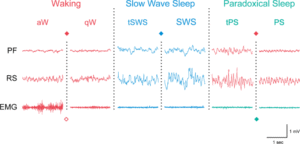Parts of the Small Intestine
Understanding the Parts of the Small Intestine
The small intestine is a crucial component of the digestive system, responsible for absorbing the majority of nutrients from the food we eat. This long, coiled tube stretches around 20 feet and connects the stomach to the large intestine. Due to its length, the small intestine twists and folds within the abdomen to fit within the space available. Most digestion takes place in this area, with the absorption of nutrients, fats, water, and minerals occurring along its length.
Function and Process of Digestion in the Small Intestine
The small intestine’s primary function is to further break down food and absorb essential nutrients into the bloodstream. Muscular contractions known as peristalsis push food through the small intestine, allowing digestive enzymes to break it down. These enzymes, which are produced by other organs, are either secreted through the intestinal wall or introduced directly into the small intestine.
Once food is sufficiently broken down, it is absorbed into the bloodstream for use by the body. The digestion process takes place in three key segments of the small intestine, each specialized for different nutrient absorption tasks.
Key Parts of the Small Intestine
The small intestine consists of three main parts, each playing a unique role in digestion and nutrient absorption:
-
Duodenum: The first and shortest segment of the small intestine, shaped like a “C.” The duodenum is where food from the stomach enters through a muscle called the pyloric sphincter. It is also where iron is primarily absorbed.
-
Jejunum: The middle section of the small intestine, where sugars, amino acids, and fatty acids are absorbed into the bloodstream.
-
Ileum: The final part of the small intestine, responsible for absorbing vitamin B12, bile acids, and other essential nutrients into the body.
Nutrient Absorption in the Small Intestine
The pancreas produces digestive enzymes that are released into the small intestine, where they help break down proteins, fats, and carbohydrates into their basic components. These nutrients are then absorbed by tiny hair-like structures called villi, which line the walls of the jejunum and ileum. The villi increase the surface area for absorption, ensuring that the body receives the nutrients it needs for energy, growth, and repair.
Crohn’s Disease and Its Impact on the Small Intestine
Crohn’s disease, a form of inflammatory bowel disease (IBD), can affect the small intestine and disrupt nutrient absorption. The most common type of Crohn’s disease, ileocolitis, affects both the ileum and the large intestine. Another form, ileitis, specifically impacts the ileum. Individuals with Crohn’s disease may experience deficiencies in essential vitamins and minerals, such as vitamin B12 and fat-soluble vitamins (A, D, E, and K), due to inflammation that interferes with nutrient absorption.
Jejunoileitis, a less common form of Crohn’s disease, affects the jejunum and may lead to nutrient deficiencies, as the majority of nutrient absorption occurs in this section. In rare cases, Crohn’s disease can also affect the duodenum, leading to deficiencies in iron, calcium, and magnesium, as these minerals are absorbed in the duodenum.
J-Pouch Surgery and Its Effect on the Small Intestine
J-pouch surgery, also known as ileal pouch-anal anastomosis (IPAA), is typically performed to treat conditions such as ulcerative colitis or familial adenomatous polyposis (FAP). During this procedure, the colon is removed, and the ileum is used to create a pouch shaped like the letter “J.” This surgical procedure can impact nutrient absorption, as the ileum is essential for absorbing vitamins and minerals. Inflammation of the J-pouch, known as pouchitis, may lead to deficiencies in key nutrients.
Other Conditions Affecting the Small Intestine
In addition to Crohn’s disease, several other conditions and diseases can affect the small intestine, including:
-
Bowel Obstructions
-
Celiac Disease
-
Gastroenteritis
-
Bacterial Infections
-
Intestinal Cancer
-
Intestinal Pseudo-Obstruction
-
Lactose Intolerance
-
Polyps
-
Ulcers
Conclusion
The small intestine is a vital part of the digestive system, with each section playing a critical role in breaking down food and absorbing essential nutrients. Understanding its structure and function can help in managing conditions that affect it, such as Crohn’s disease and other digestive disorders. If you experience symptoms such as nutrient deficiencies, persistent digestive issues, or other related concerns, it’s important to consult a healthcare provider for proper diagnosis and treatment



